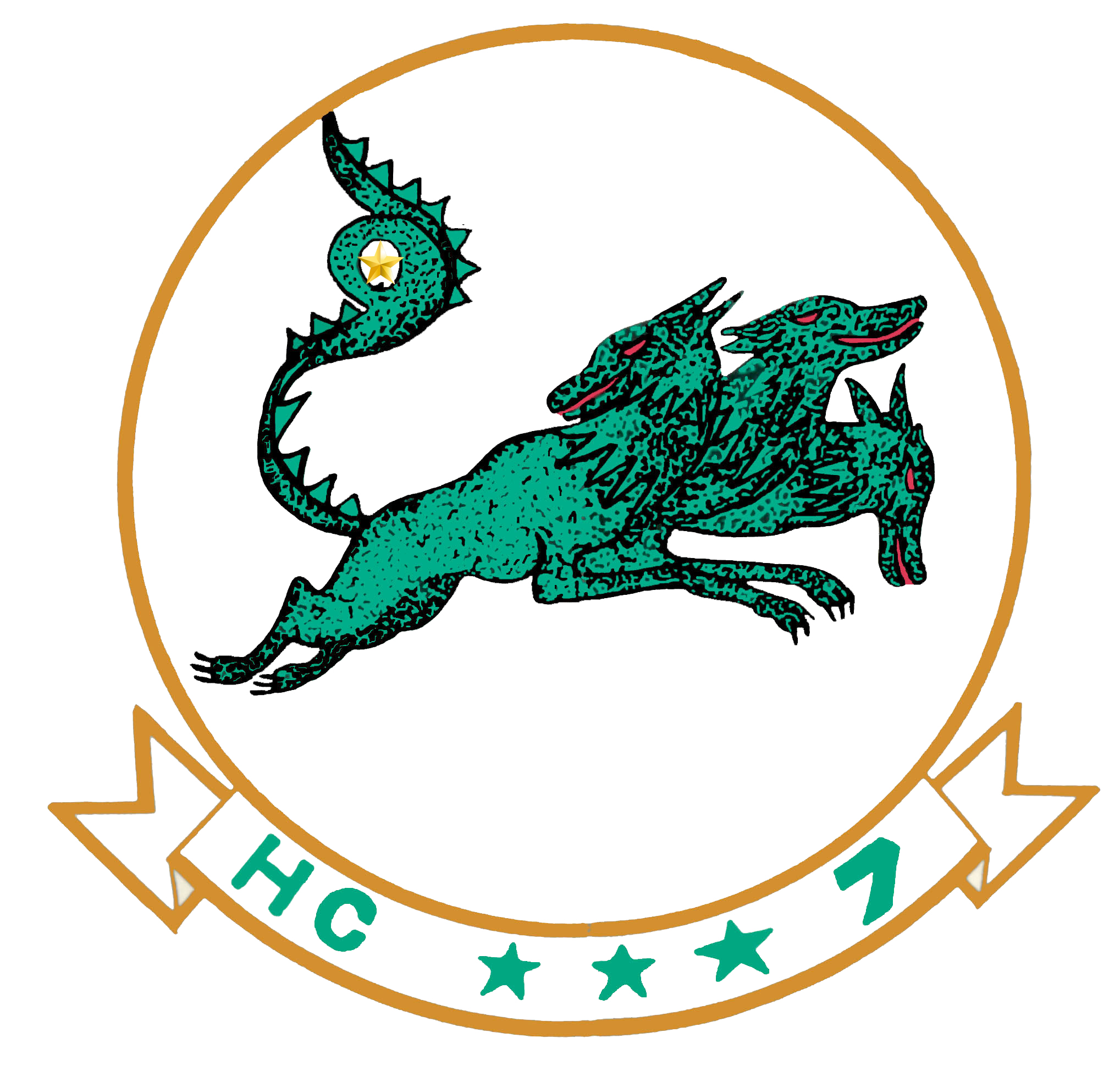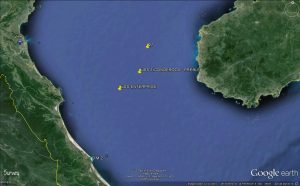
HC-7 RESCUE 27 (1) 25-Feb-1968 (Sunday)
SH-3A Sikorsky Seaking DET 110
USS Enterprise (CVA(N)-65) Routine Night (2)
94 miles off the coast of North Vietnam
Water: 68⁰ Air: 60⁰ Wind: 30 knots Sea State: 2 – wave 8 feet
Pilot – LCDR James C. Robinson
Co-pilot – LTJG Jerry D. Huffman
1st crew – AZ-3 William J. “Dusty” Rhodes
2nd crew – AX-2 Gerald J. Allen
Alert received – 0245: alerted by air ops
Vehicle departed – 0255: 40 miles
Arrived on scene – 0330: search required
Located survivor – 0400: electronic location as reported by fixed wing aircraft PRC–63 beeper, strobe light
Begin retrieval – 0404 : strobe light
Ended retrieval – 0409: rescue effected
Survivor disembarked – 0415 : survivor taken to USS Ticonderoga
F-8E 150335 Side No. 11 VF-191 (Satan’s Kittens), USN,
USS Ticonderoga
LT Wendell E. Brown
A Crusader was lost during a night BARCAP mission when it ran out of fuel. The night was very dark and stormy and Lt Brown had difficulty engaging the basket of an A-3 tanker. Eventually his flight-refueling probe hit the basket and damaged it so the Ticonderoga scrambled an A-4 with a buddy re-fueling pack as a replacement. Just as Lt Brown plugged into the tanker’s basket the A-4 pilot inadvertently disconnected him and the F-8 flamed out. Lt Brown ejected and was eventually picked up by a Navy helicopter after spending two and half days in his raft in the Gulf of Tonkin. (5)
1- Low ceiling visibility, the heavy rain and a very dark night with no horizon delayed the search and recovery. Hover by requiring mostly instrument flying and hovering.
2- Recommend that survivor keep strobe light on and held high until helo is on top. Should use flare gun only if helo is at long range.
HS-Rag and squadron instrument and night flying experience of pilot and 1st crewman were helpful. The co-pilot had experienced HS-Rag night and instrument training. All of the crew had obtained H-3 combat SAR instrument and night training by HC-5.
USS DeHaven (DD-727) Deck Log 25-Feb-1968
0300 c/s to 8 knots commenced lowering superheat. Ticonderoga has stopped her engines. Maneuvering to stay close to station while searching for downed pilot. 0337 formation c/c to 035 c/s to 15 knots maneuvering to at various courses and speeds to regain station with the guide bearing 030 at 3000 yards. 0350 on station pilot recovered by Ticonderoga
USS Enterprise (CVA(N)-65) Deck Log 25-Feb-1968
0244 c/c to 040 T, Launched helo to recover downed pilot from USS Ticonderoga
USS Ticonderoga (CVA-14) Deck Log 25-Feb-1968
0230 F-8E Bur No 150335 of VF-191, pilot Ltjg W.E. Brown USN crashed into the sea at 18⁰-53.5’ Lat, 107⁰-47’ Long. 0240 c/c to 325 0242 set maneuvering combination. 0247 c/c to 250 0254 c/c to 260. 0256 arrived in vicinity of 18-53.5 Lat, 107-47 Long and commence maneuvering at various courses and speeds while conducting search for downed pilot. 0336 all engines ahead standard. 0338 c/c to 035, recovered pilot Ltjg W.E. Brown of VF-191, no injury to pilot.
USS Preble (DLG-15) Deck Log 25-Feb-1968
02:34 maneuvering at various courses and speeds to conduct a search for downed pilot. 03:37 helicopter making rescue. 03:42 secured the rescue detail.
1) Numbering as per HC-7 Rescue Log (accumulative rescue number)
2) HC-7 1968 Command Report
3) HC-7 Det 110 Rescue report
4) Map – Goggle Earth
5) “Vietnam – Air Losses” By: Chris Hobson (with permission)
10) HC-7 History collection – Ron Milam – Historian
(Compiled / written by: Ron Milam, HC-7 Historian – HC-7, 2-1969 to 7-1970, Det 108 & 113)
